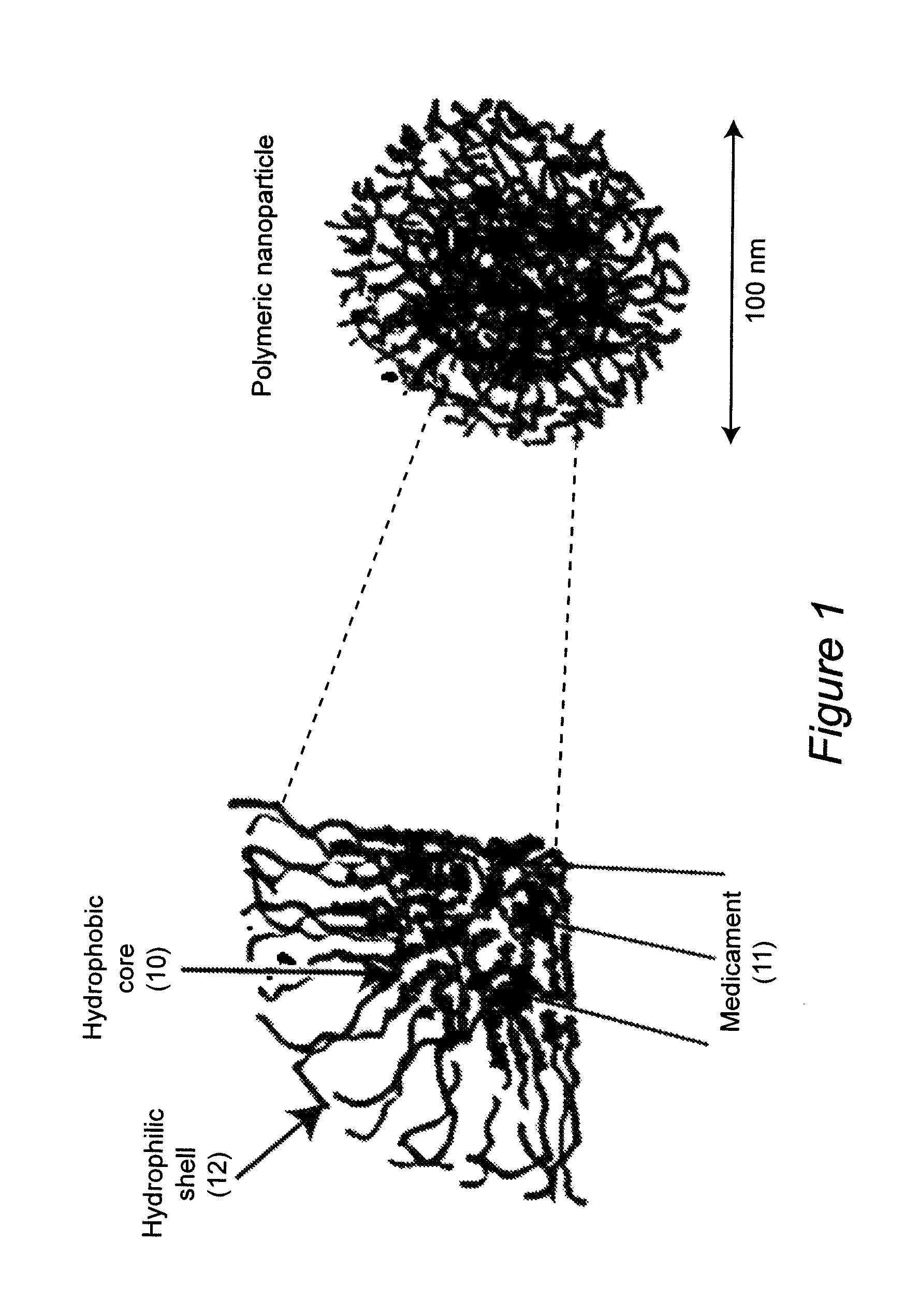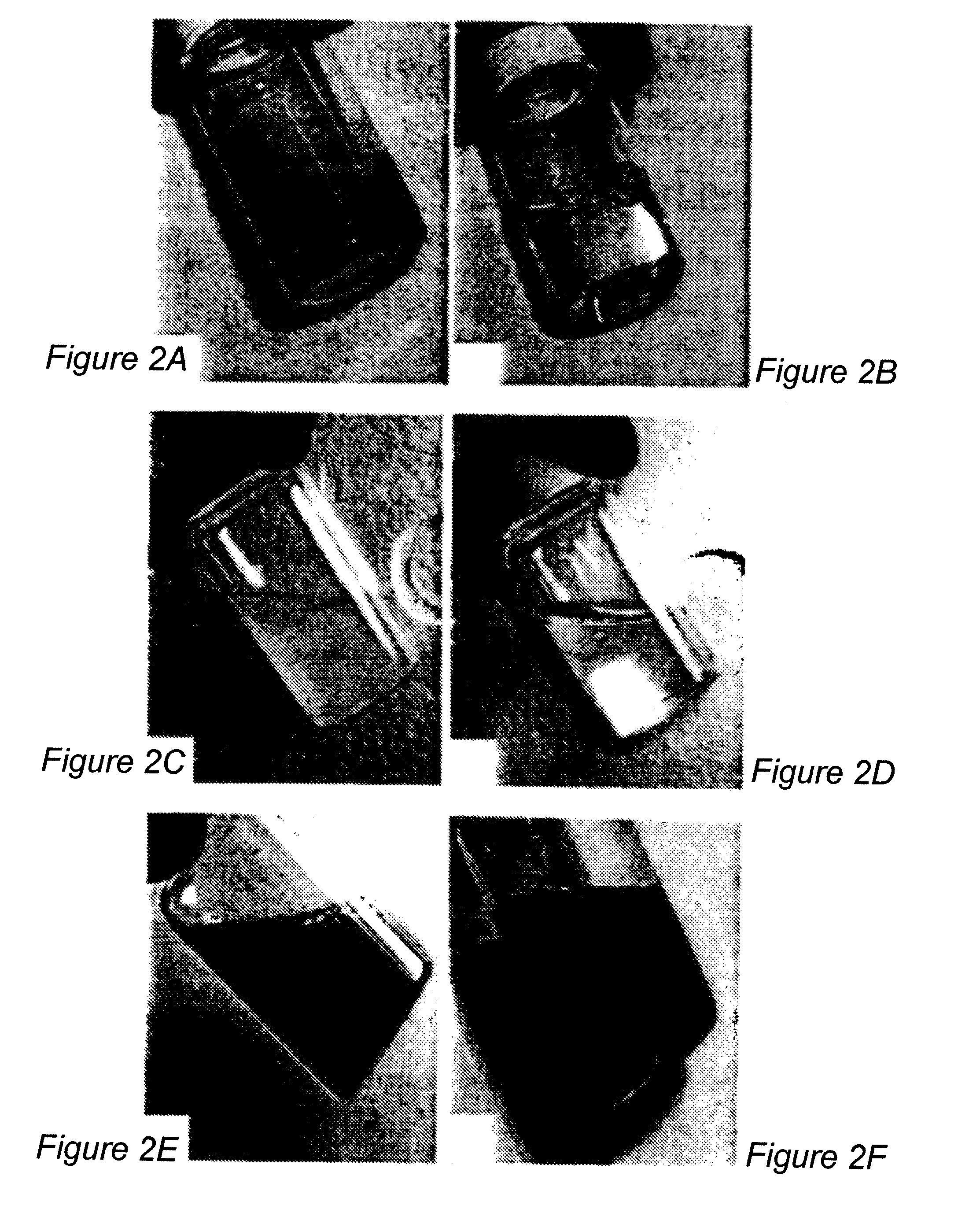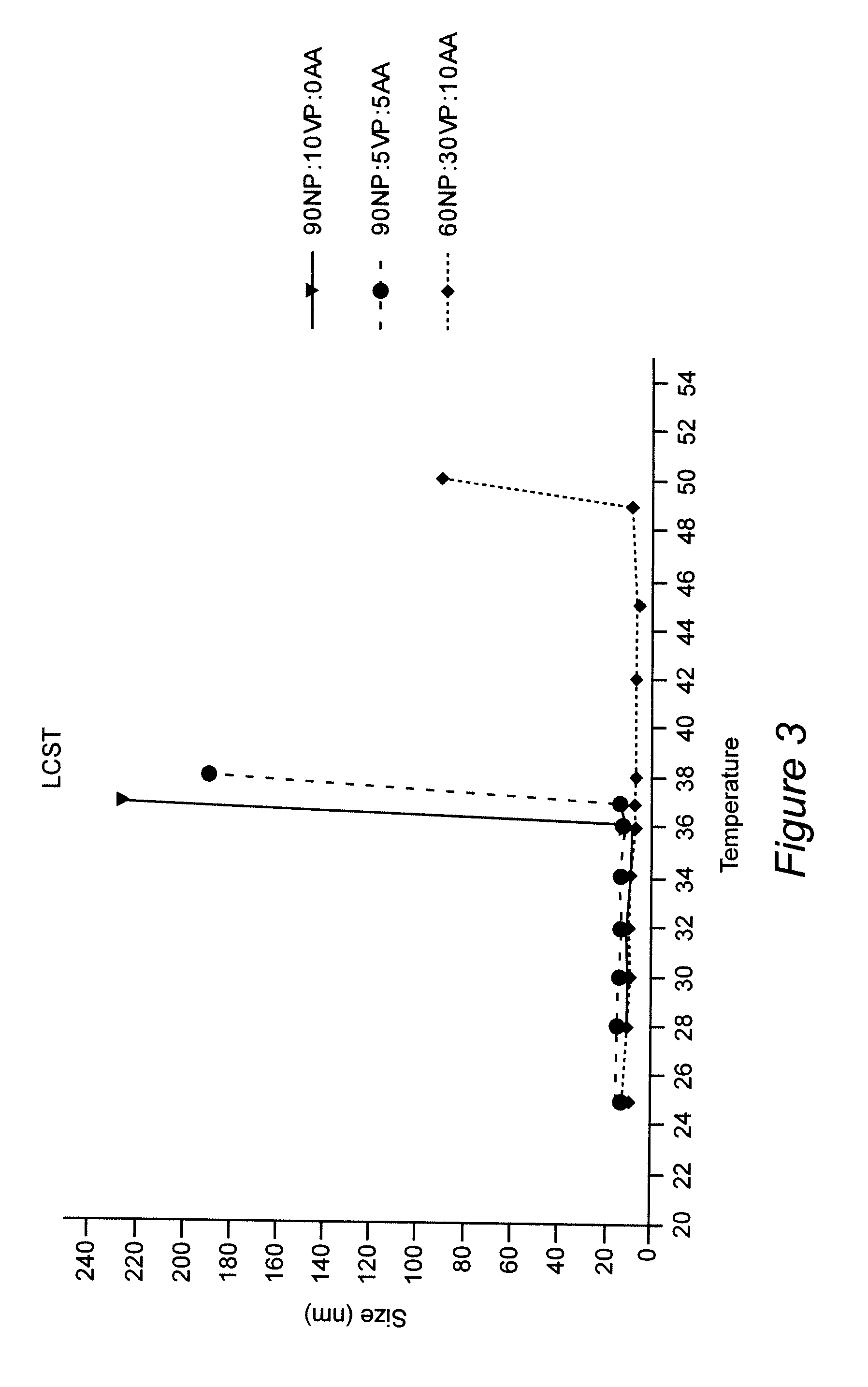Water-dispersible oral, parenteral, and topical formulations for poorly water soluble drugs using smart polymeric nanoparticles
a nanoparticle and nanoparticle technology, applied in the direction of microcapsules, anti-inflammatory agents, drug compositions, etc., can solve the problems of biological membranes, unfavorable targeting of drugs using such emulsion systems, and unnecessary side effects in the body, so as to improve the bioavailability of drugs.
- Summary
- Abstract
- Description
- Claims
- Application Information
AI Technical Summary
Benefits of technology
Problems solved by technology
Method used
Image
Examples
example 1
Synthesis of Cross-Linked Copolymeric Micelles of NIPAAM, VP (a Water-Soluble Vinyl Derivative), and AA
[0059]A co-polymer of NIPAAM with VP and AA was synthesized through free radical polymerization. Water-soluble monomers, NIPAAM, VP and AA were dissolved in water in 60:30:10 molar ratios for NVA631, 60:20:20 for NVA622, and 60:10:30 for NVA613. The polymerization was initiated using ammonium persulphate (APS) as initiator in N2 atmosphere. Ferrous Ammonium Sulphate (FAS) was added to activate the polymerization reaction and also to ensure complete polymerization of the monomers to obtain a good yield. Using NVA631 as a prototypal example, in a typical experimental protocol, 62.8 mg of re-crystallized NIPAAM, 30.5 μl of freshly distilled VP and 6.61 μl of AA (freshly distilled) in 10 ml of water were used. To cross-link the polymer chain, 30 μl of MBA (0.049 g / ml) was added in the aqueous solution of monomers. Dissolved oxygen was removed by passing nitrogen gas for 30 minutes. 20 ...
example 2
Synthesis of Cross-Linked Copolymeric Micelles of NIPAAM, MMA (Water-Insoluble Vinyl Derivative), and AA
[0060]A co-polymer of NIPAAM with MMA and AA was synthesized through free radical polymerization. Water-soluble monomers—NIPAAM and AA—were dissolved in water, and water-insoluble MMA was dissolved in the micellar solution of NIPAAM and AA, in 60:30:10 molar ratios for NMA631, 60:20:20 for NMA622, and 60:10:30 for NMA613. The polymerization was initiated using ammonium persulphate (APS) as initiator in N2 atmosphere. Ferrous Ammonium Sulphate (FAS) was added to activate the polymerization reaction and also to ensure complete polymerization of the monomers to obtain a good yield. Using NMA622 as a prototypal example, in a typical experimental protocol for preparing NMA622, 66.6 mg of re-crystallized NIPAAM, 19.4 μl of freshly distilled MMA and 14 μl of AA (freshly distilled) in 10 ml of water were used. To cross-link the polymer chain, 30 μl of MBA (0.049 g / ml) was added in the aqu...
example 3
Surface Modification of NIPAAM VP / AA Copolymeric Micelles with 5 kD PEG Moiety
[0061]The formulations NVA631, NVA622 or NVA613 were prepared using the detailed protocol as described above. The exemplary functionalized PEG molecule used for post-copolymerization conjugation to AA was Methoxy-polyethylene glycol amine (Methoxy-PEGamine; molecular weight 5000 D). Conjugation of Methoxy-PEGamine with the carboxylic group of acrylic acid in the co-polymer was done by using EDCI as a crossslinker. Briefly, 100 mg of the lyophilized co-polymer powder was dissolved in 10 ml of phosphate buffer. To this, 5 mM of 1-ethyl-3-(3-dimethylaminopropyl)-carbodiimide hydrochloride (EDCI) was added and stirred for 30 minutes. Thereafter, 5 mg of Methoxy-PEGamine was added to the copolymer solution and stirred overnight at room temperature. The next day, the solution was dialyzed for 2-4 hrs to remove any unconjugated Methoxy-PEGamine using a 12 kD dialysis membrane followed by subsequent lyophilization...
PUM
| Property | Measurement | Unit |
|---|---|---|
| LCST | aaaaa | aaaaa |
| temperature | aaaaa | aaaaa |
| temperature | aaaaa | aaaaa |
Abstract
Description
Claims
Application Information
 Login to View More
Login to View More - R&D
- Intellectual Property
- Life Sciences
- Materials
- Tech Scout
- Unparalleled Data Quality
- Higher Quality Content
- 60% Fewer Hallucinations
Browse by: Latest US Patents, China's latest patents, Technical Efficacy Thesaurus, Application Domain, Technology Topic, Popular Technical Reports.
© 2025 PatSnap. All rights reserved.Legal|Privacy policy|Modern Slavery Act Transparency Statement|Sitemap|About US| Contact US: help@patsnap.com



